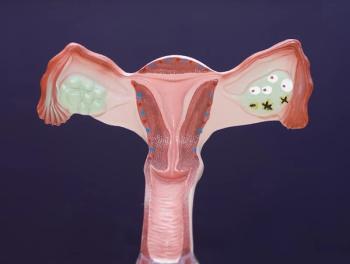
- ONCOLOGY Vol 22 No 1
- Volume 22
- Issue 1
Capecitabine-Based Combination Proves Comparable to Standard Therapy in Esophagogastric Cancer
Data published in the New England Journal of Medicine show that oral capecitabine (Xeloda) and oxaliplatin (Eloxatin) in combination with epirubicin (Ellence) is a comparable alternative to infused fluorouracil (5-FU) and cisplatin with epirubicin in patients with previously untreated, advanced esophagogastric cancer.
Data published in the New England Journal of Medicine show that oral capecitabine (Xeloda) and oxaliplatin (Eloxatin) in combination with epirubicin (Ellence) is a comparable alternative to infused fluorouracil (5-FU) and cisplatin with epirubicin in patients with previously untreated, advanced esophagogastric cancer. In the study, median survival time was longer and 1-year survival was higher among patients taking EOX (epirubicin/oxaliplatin/capecitabine) compared to the standard treatment, ECF (epirubicin/cisplatin/5-FU).
"Our research suggests that oral Xeloda and oxaliplatin can provide patients with a valuable option over the standard regimen of infused fluorouracil and cisplatin in combination with epirubicin as a first-line therapy for esophagogastric cancer," stated lead investigator David Cunningham, MD, frcp, head of the Gastrointestinal and Lymphoma Units of the Royal Marsden Hospital National Health Service Foundation Trust of Surrey and London.
About the Study
The phase III REAL 2 study was conducted in 1,002 advanced esophagogastric cancer patients from 61 centers mainly in the United Kingdom. The study aimed to establish the potential use of capecitabine and oxaliplatin in previously untreated patients, and the primary endpoint was noninferiority in overall survival in patients who received capecitabine compared to those who received fluorouracil and for those who took oxaliplatin compared to cisplatin.
Patients were randomized to one of four regimens. Median survival times in the ECF, ECX (epirubicin/cisplatin/capecitabine), EOF (epirubicin/oxaliplatin/5-FU) and EOX groups were 9.9, 9.9, 9.3, and 11.2 months, respectively; 1-year survival rates were 37.7%, 40.8%, 40.4%, and 46.8%, respectively. In a secondary analysis, overall survival was statistically significantly longer with EOX than with ECF, with a hazard ratio of 0.80 in the EOX group (95% confidence interval = 0.66–0.97; P = .02).
Articles in this issue
almost 18 years ago
What Is the Role of Maintenance Rituximab in Follicular NHL?almost 18 years ago
ONCOLOGY: A Look Aheadalmost 18 years ago
FDA Approves Thyrotropin Alfa for Use in Thyroid Cancer Ablationalmost 18 years ago
Can Patient Reporting Affect Radiation Pneumonitis?almost 18 years ago
Anastrozole Confirmed Superior in Breast Cancer Preventionalmost 18 years ago
Critical Questions About Rituximab Maintenance in Lymphoma PatientsNewsletter
Stay up to date on recent advances in the multidisciplinary approach to cancer.


















































































